Jonathan David is the latest young prospect to be heavily linked with Barcelona, and the La Liga giants seem to be in the running for the 20-year-old forward as one of the several clubs standing in line for his signature.
But would he actually be a sensible buy or should the Catalans let him go to one of the many Premier League or Bundesliga clubs that are also interested? This tactical analysis will give you a scout report on David and provide you with an analysis with an aim to find out whether the young Canadian would fit Barcelona’s tactics.
Player overview
David is a 20-year-old forward plying his trade over in Belgium at Gent and his recent emergence has already turned a couple of big European heads, prompting some of the giants of modern football to turn their gaze upon him.
The young talent thrives in the attacking midfield position but has also been known to play as a second-striker or even a sole centre-forward for both club and country. He excels at wreaking havoc through the middle channels, carrying the ball forward when needed and beating the opposition’s defensive line with his dribble and technique.
But what also stands out when further analysing his player profile seem to be his runs behind the opposition’s backline and his awareness and positioning that often put him at the right place at the right time.
For that reason, it doesn’t surprise that he’s managed to score 18 goals and assist further eight across just 27 games in the Jupiler Pro League and three in seven Europa League appearances.
But how exactly would he fit Barcelona and their tactics? Let’s find out.
Compatibility with Barcelona
When looking at the player, far too often we make a mistake of judging them solely on their ability without considering the whole context. At Gent, David is a star and rightfully at the centre of everything good they’re doing in attack.
But just his incredible talent and skill don’t instantly make him a perfect fit for any team’s tactics. This season, the Belgian club has mostly been operating in a 4-3-1-2 formation, utilising it in 78% of occasions. And David is used in that no.10 role and just behind the striker 43% of the time, connecting the midfield with the attack and bursting into the box with pace.
But this is actually the first problem he could potentially run into at Barcelona if he is to be used in his favourite role at the Camp Nou. The Catalans have completely abandoned the notion of a natural attacking midfielder, favouring their traditional 4-3-3 scheme on the pitch for one single reason – they have Lionel Messi instead.
When we compare Messi’s heatmap to David’s we can see one crucial overlap exactly around that zone 14 and in the half-spaces.
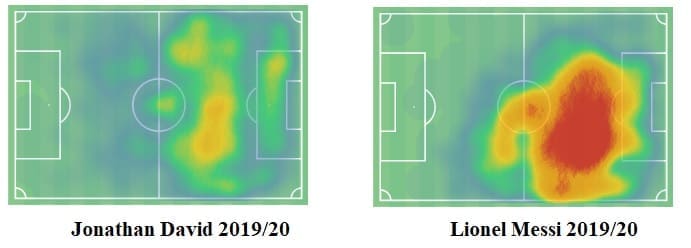
Of course, Messi’s influence is naturally much bigger than the 20-year-old’s but just the fact that well-established players like Philippe Coutinho or even Antoine Griezmann have either already failed or are still struggling at the club does indicate this is something that could potentially present a huge problem for such a young player.
Both the Brazilian and the Frenchman, for instance, like to operate in a similar zone and had to adjust their positioning accordingly to accommodate for the best no.10 on the planet. Expecting Barcelona to change their approach for David would be a bit of a stretch, to say the least.
Another stumbling block in this attacking midfielder role is also the Canadian’s playmaking potential. While he is a technically brilliant player that can beat his marker and burst through the defensive line, he doesn’t really have the tools Barcelona need in a no.10 of their own.
Drawing comparisons with Messi is futile but if someone is to get a shot at that role, he needs to be an excellent ball progress and have the ability to be the team’s creative playmaker as well as a finisher. And while we have seen David in a creator role for Gent at times, this particular asset of his is not nearly as emphasised to be considered a constant weapon in his arsenal.
Let’s examine one such action below where the Canadian international assumes the playmaker’s role and provides a penetrating through ball to assist one of his teammates up front.
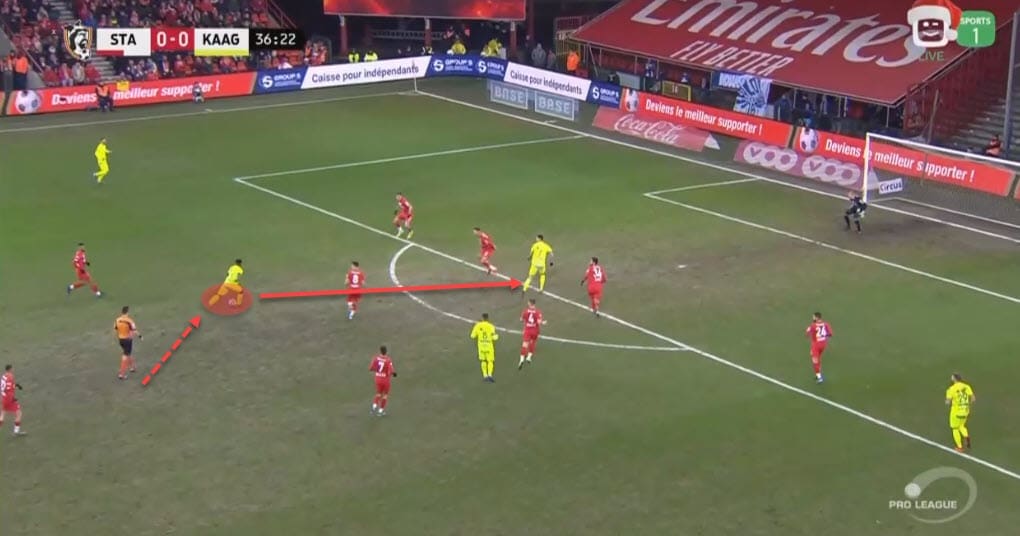
But his passing figures confirm our thesis and do suggest further work needs to be done in this area if he is to have a future at Barcelona in his favourite role. So far, he can boast with 30.46 passes per 90 minutes with a success rate of 81.2%, which is not really ideal for a Barcelona midfielder.
On a similar note, he deploys 2.76 passes into the final third with decent success, hitting his target 73.3% of the time and attempts only 0.55 long balls per 90 minutes. But even still, there is one attribute of his that would be extremely beneficial to Barcelona’s tactics – his constant runs into the box.
David will often position himself just outside the area and then make a bursting run past the defenders and into the danger zone to connect with a well-timed pass by his teammate. But while he is really dangerous when closer to the goal, as we will see in the next section of this tactical analysis scout report, his runs often come from deeper in the midfield.
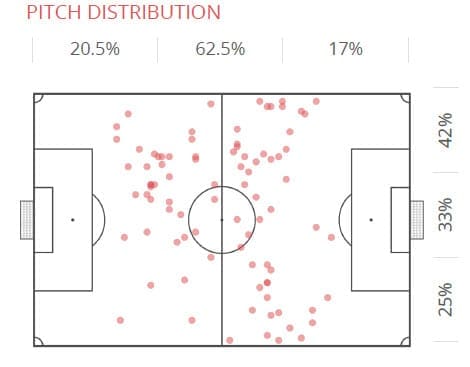
Above is a graphic representation of his on the ball accelerations and the areas of the pitch where does runs originate in. We can see that a total of 62.5% come from the middle third. It should also be noted that he makes those runs 1.21 times per 90 and then uses either of the half-spaces 67% of the time to advance, leaving the central zones for the other 33% of the time.
Since the Catalans are lacking such a presence in their squad at the moment, the Canadian would bring something entirely different to their tactics and that could solve many of their current problems.
So while there are certainly ways Barcelona could utilise his presence from the midfield line, it is more likely that David will have to assume a different role in their tactics and transition into the role of a second-striker or a sole centre-forward.
Luis Suárez replacement
For a couple of transfer windows now, there’s constantly been talk of Barcelona looking for that long-term Luis Suárez replacement and even though Griezmann looked like a serious candidate, so far the Frenchman has been used in a different role at the Camp Nou.
But David has all the attributes that a Barcelona no.9 needs to have, as we will see in this part of our tactical analysis. Let’s get the most important part out of the way and analyse his movement inside the area and his finishing.
Even though the attacking midfield is his preferred role and we’ve seen that he mostly operates around the box, David is also well capable of slotting into the centre-forward role, occupying it 36% of his total playing time as his second most-used position on the pitch.
The Canadian will often sit on the shoulder of the defender, waiting for the right moment to sprint into the space, either catching the opposition markers off guard or simply using his awareness and pace to win the duel.
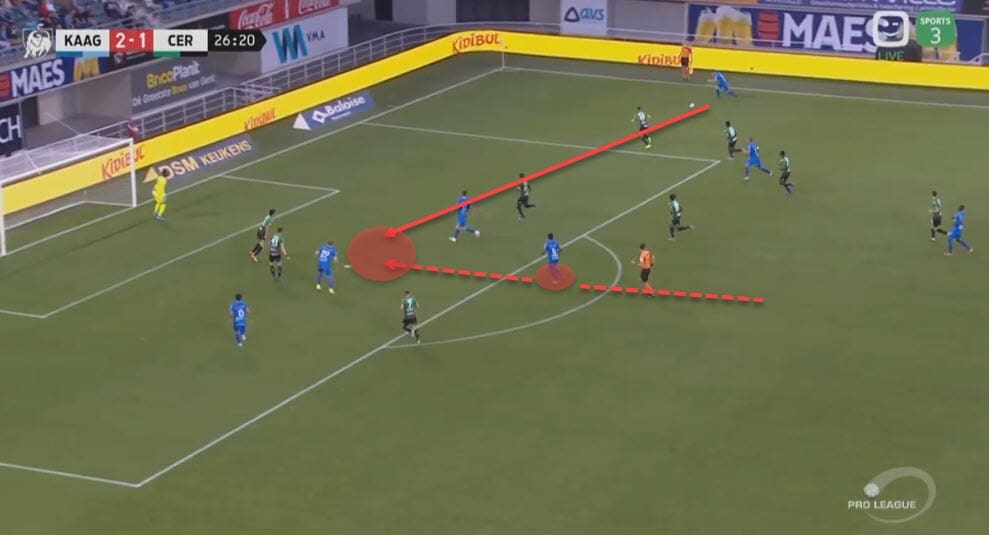
We can actually see such a similar scenario above as David starts the attack on the edge of the box but quickly repositions himself to receive the pass and slot the ball into the net shortly after.
And we know this is not an isolated case when we take a look at the opportunities he creates and his shooting graph below. We can see that he is clearly a big presence inside the box rather than outside it and is most dangerous the closer he gets to the goal, as we alluded to at the very beginning of this tactical analysis scout report.
This is also further solidified by the fact zone B (just around the penalty area) is where most of his shots come from – 38.2%.
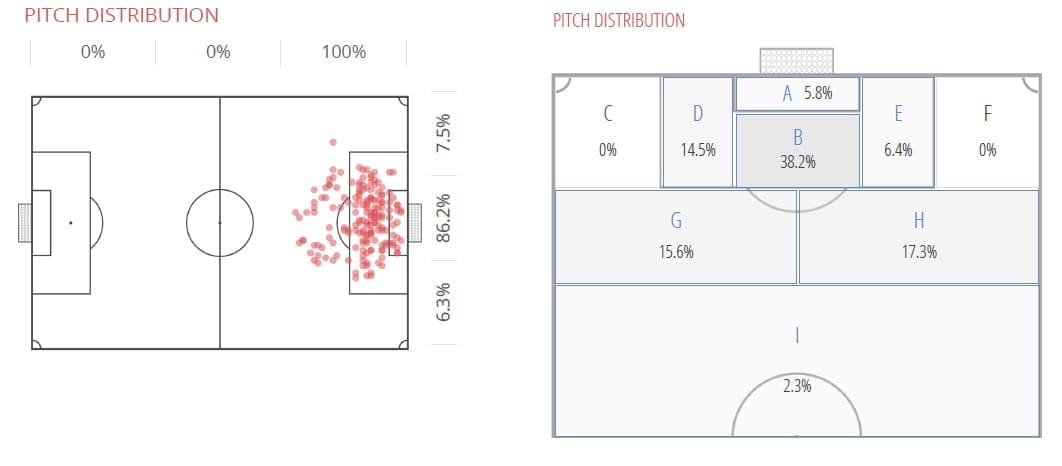
What is even more impressive about his shooting is the fact that not only does he attempt 2.33 shots per game but he also hits the target 50% of the time. Of course, the sheer volume might not be ridiculously high but the accuracy definitely is impressive.
And with 4.74 touches in the box and 44.7% of offensive duels won in 2019/20, David seems like a dangerous presence inside the opposition’s box that can’t be allowed a single second of free time on the ball.
When we combine this lethality, his pure technical ability and piercing runs from the deeper areas with the fact that he consistently offers a link-up channel to his midfielders, we get a really well-rounded centre-forward that would fit the right profile to suit Barcelona’s tactics.
Suárez is the type of striker who will drop deeper when necessary, interacting with his midfield, assisting the build-up and shuffle opposition defenders out of their shape. David may not presently have all of that in his locker but he can definitely be used as an outlet to progress the ball when he drops into a deeper position.
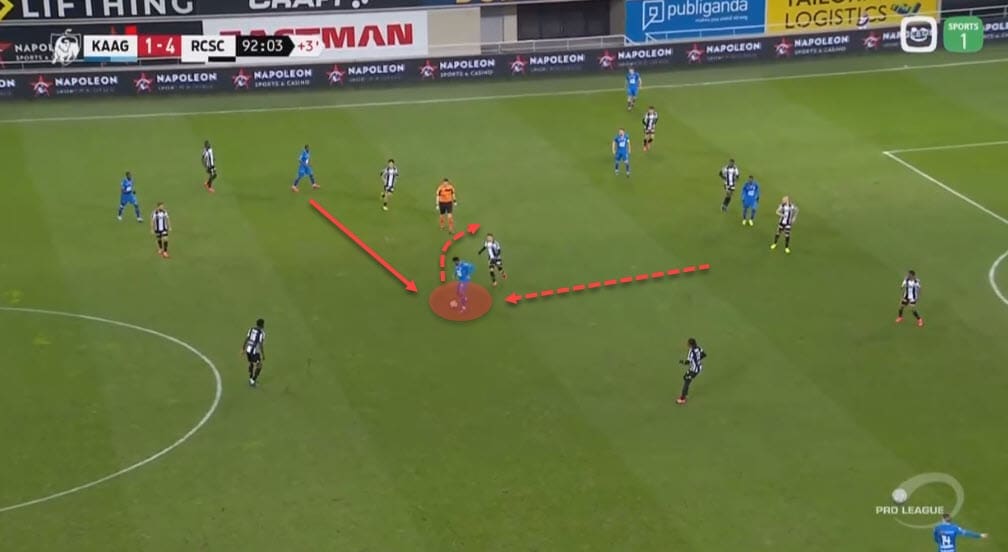
You can see such an instance above as David drops deeper to receive the ball and then uses his dribbling abilities to beat his man and progress into the final third, trying to set up his teammate in the process.
And since he can boast with 4.19 dribbles per 90 minutes in 2019/20 with a success rate of 52.3%, we can say this is definitely one of his better attributes along with the pure finishing.
Finally, let’s take a quick look at the following spider chart, courtesy of Soccerment, which gives us a head-to-head comparison of David and Suárez. The blue line represents the young Canadian while the Uruguayan Pistolero is marked with green.

And while there are certain deviations, we can’t expect him to be a perfect replica of Barcelona’s current striker. But even though he is an attacking midfielder by trade, David looks perfectly equipped to thrive as the Catalans’ centre-forward.
Possible roles and final remarks
The final verdict we can give on this potential transfer is that there’s certainly a way for Barcelona to adapt David’s playing style to their tactics but it would require some tweaking. He is a well-established attacking midfielder but it’s difficult to actually see him succeed in that role at the Camp Nou.
While it may be harsh to say, Messi’s presence prevents that from happening at the very moment and the Canadian still doesn’t have the complete skill set that Barcelona require from their no.10 playmaker.
For that reason, our tactical analysis will conclude with three preferred options for the youngster – a sole centre-forward as a replacement for the ageing Suárez and a role of a second-striker in a 4-4-2 and a 4-4-2 diamond setups.
His lethality and presence in the box make him a perfect out-and-out no.9 for any team but it’s his ability to drop deeper and link-up with his midfield that makes him compatible to Barcelona’s tactics in this role.
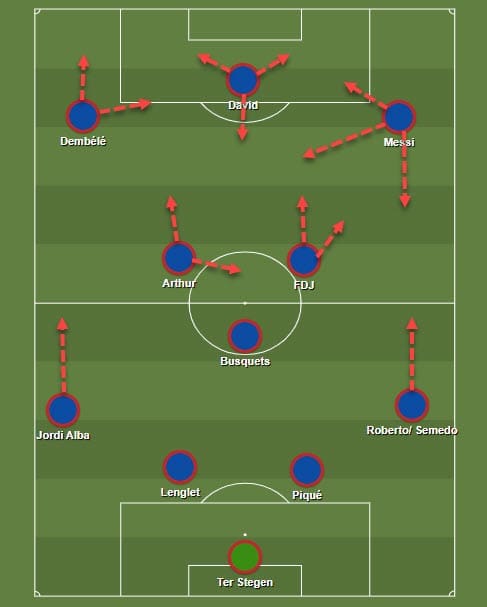
But he could also partner Suárez in the starting XI as the second-striker with a bit more freedom to roam, potentially slotting wide or dropping deeper when necessary but also providing those piercing runs behind the opposition’s line.
You can only imagine the field day Messi would be having with such a willing and consistent runner in the team such as the 20-year-old Canadian talent. If, however, Barcelona decided to go for a more traditional and flat 4-4-2 with Messi in the forward line instead of the midfield, David could also serve as the more traditional forward of the two, keeping closer to the opposition’s goal while the Argentine does his thing in the deeper areas.
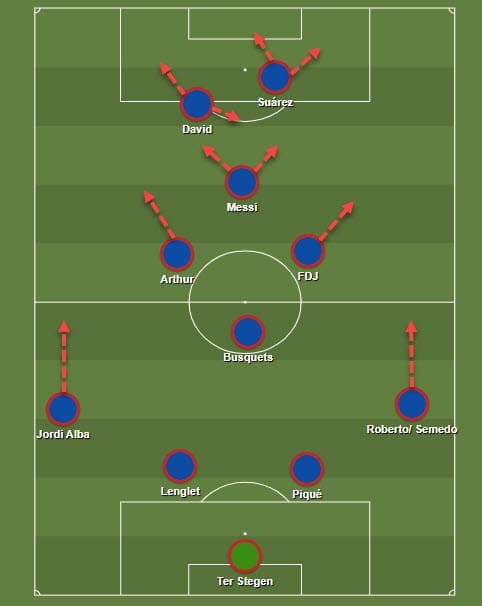
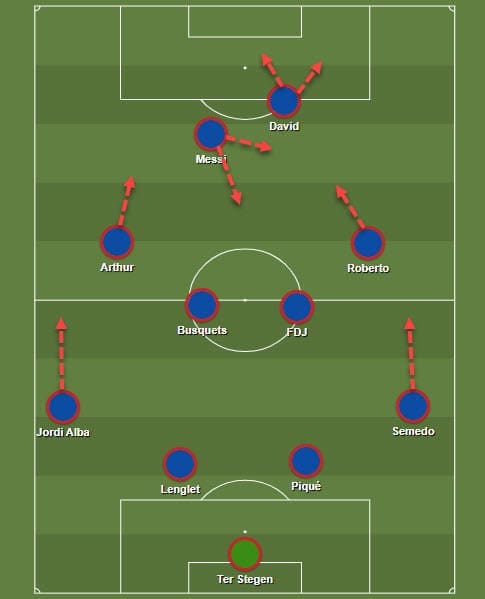
Either of the three options seems like a more realistic outcome than the attacking midfield if this transfer does end up going through. Of course, as Messi gets older and transitions into an even deeper role on the pitch, that no.10 positions might suddenly be up for grabs once again.
And who knows, maybe then David could get to showcase his talent there as well.






Comments